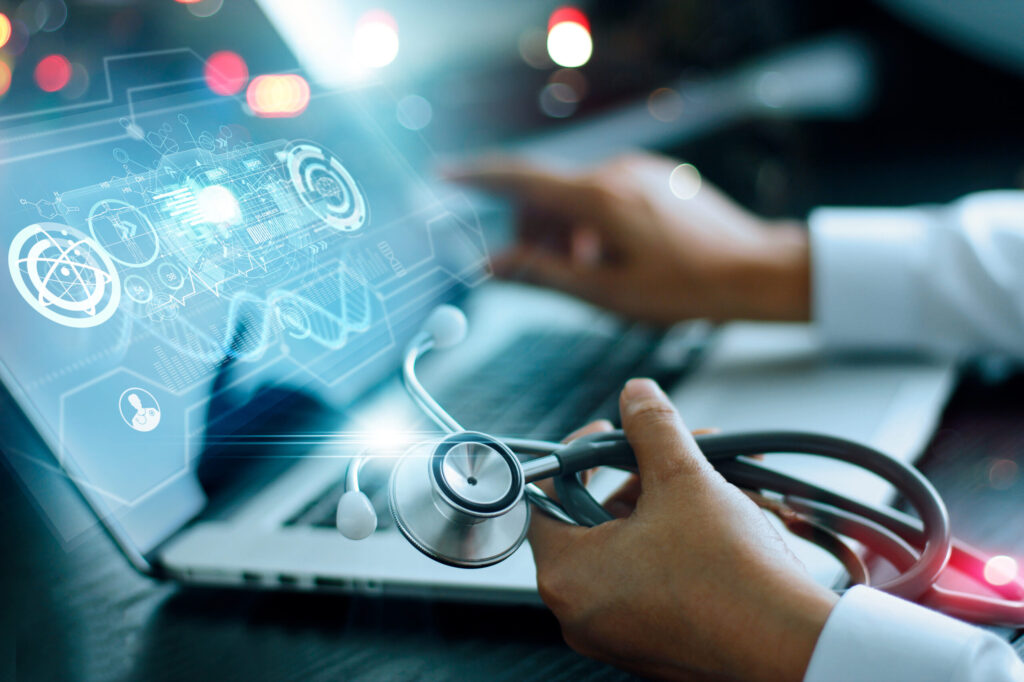
The health ecosystem in Nigeria is about to undergo technological transformation that promises to have a positive impact on health outcomes among our citizens. One of the innovations being proposed is the migration from the archaic paper and pencil to a digital system, popularly referred to as EMR, which stands for Electronic Medical Record.
In the digital system, instead of a health provider documenting patients’ narratives and findings on a paper, the medical records are stored electronically using software programmes. EMR systems are a kind of data warehouses that store information about patients including socio-demographic characteristics (e.g., age, marital status, education level, occupation, and so on); diagnoses of patient’s current and previous conditions; details about medications; laboratory tests, records of vaccinations, and details about allergies.
In addition, EMR can be employed as a digital tool to perform other tasks, such as serving as online portals to facilitate patient access to their medical information; assisting physicians to avoid errors in making drug prescription; placing orders for specific laboratory tests; built-in connections with coding and billing software to facilitate payments by NHIA (National Health Insurance Authority).
With the use of EMR, a health facility can determine the burden and trends of communicable and non-communicable diseases that occur in its locality, and to detect disease outbreaks, further demonstrating the applicability of the EMR for nationwide disease surveillance, preparedness and response. We at KIRCT (Kano Independent Research Centre Trust) are currently discussing with the Kano CDC (Centre for Disease Control) to use our EMR system in a way that enhances capture of disease outbreak signals statewide. The EMR will help in supply chain management, logistics and medication inventory.
In this article, we will describe some of the benefits that will result from the implementation of the EMR system in Nigeria, and the operational characteristics that distinguish an EMR from an EHR (Electronic Health Record) although both terms tend to be used interchangeably in the digital world.
Potential benefits of implementing a nationwide EMR system in Nigeria
Currently, only a few medical facilities in Nigeria are wired to an EMR, a situation that needs to improve so that patient’s experiences and outcomes are enhanced positively. The merits/benefits of an EMR system include:
EMR limits paperwork while boosting efficiency and productivity. The reduced paperwork for staff means clinicians will spend more time with their patients to clinch an accurate assessment and diagnosis. Instead of treating only symptoms due to lack of time because of heavy paperwork burden, the EMR approach offers more patient-provider interaction time to uncover the roots/causes of patients’ complaints.
This results in a quick prescription and referral delivery, which reduces the amount of time patients have to wait for appointments and pickups of prescription. Patients can be alerted by automatic reminders when it’s time for their yearly physicals or when they approach milestones that call for routine screenings. Further, billing and insurance claims can be submitted on time with integrated patient tracking and ascertainment.
EMR enables feasible data collection for more personalised therapy, which allows healthcare providers to address health issues promptly. Additionally, integrated ‘big data’ analytics on combined patient data might be used to notify medical professionals about more significant health trends, such as imminent disease outbreaks (e.g., the recent diphtheria epidemics in Kano) and the emergence of new health threats in the community.
EMR drastically reduces administrative costs by eliminating the need for paper transcriptions, physical chart storage, coding, and claims management. It also renders care coordination easier and faster. EMR shortens the time it takes for clinicians, labs, pharmacies, and health plans to communicate bi-directionally, and to address complicated issues real-time. The current paper and pencil methods of communication are comparatively inefficient, time-consuming, and cost-prohibitive.
EMR systems provide timely access to patient information and integration of that information with order entry, decision support, and care-planning networks. They also serve as the data source and portal for communication with other providers, patients, and insurers, as well as, access to EMR over the years has strengthened consumer compliance with prevention, disease management, and care guidelines; boosted hospitals’ administrative efficiency; and increased safety and coordination among providers and diminish health inequity due to lack of medical access among socio-economically marginalized populations, cuts down on risk performance assessment, averts medical errors, and suppresses inaccurate decision-making in patient management processes.
Distinguishing features of EMR (electronic medical record) versus EHR (electronic health record.)
Another important issue relates to the nomenclature of EMR (electronic medical record) versus EHR (electronic health record), and the confusion that often results from their usage. We believe it is important to shed light on the differences and similarities regarding the two acronyms to guide policy-making and regulatory processes in the Nigerian health ecosystem.
Extra-security restricting data sharing: EMR and EHR are computerised medical record systems that store patient’s sensitive information which includes diagnostic procedures, lab investigations as well as plan of care and placement of orders. EMR is relatively more secure than EHR because access to patient data is highly restricted allowing only authorized users to see patient information, which is only available within the same organisation. EMR is not designed to be shared outside of an individual clinic or hospital. This is an important distinction from EHR, which allows its users to share patient medical history, regardless of the location and across different provider settings.
Accessibility: Both systems are accessible immediately at any unit work-station whenever needed. Electronic data allow easy transaction to be accomplished simultaneously from remote sites assuring prompt retrieval and processing of patients’ information. Both EMR and EHR allow patient portability where the files can be sent instantly via emails.
Affordability for a single institution: EMR is more affordable to implement as a single institution because it is only accessible within the same organization, hospital or clinic, unlike EHR that requires more resources to make it accessible across different organizations and locations.
Tracking patient data over time across providers: EHR allows authorised users to exchange information with one another remotely and in real-time, making sure every clinician dealing with a patient has a current, complete and accurate file both in the organization and at other locations while EMR is restrictive in that regard.
User-friendliness: EMR is easier to navigate and users could be trained within days to be able to use the platform efficiently. Contrastingly, EHR may take months or even years to accomplish its proper implementation and efficient utilisation.
Easy patient referral and transfer: EHR is built in a way to facilitate patient transfer and referral because multiple authorised users can access it across different health facilities while EMR does not permit such a wide access across different health institutions.
Reduction in medical error: Both EMR and EHR are digital records that allow better tracking and more standardised documentation of patient interactions, a step that reduces medical error. With digital trails, illegible handwriting in clinicians’ notes or prescriptions is no longer a problem and coding for procedures or billing is easier. Integrated systems can also be set to flag drug interactions and other indicators of potential harm.
Surveillance (Regional, National & International): Strictly speaking, EMR does not allow surveillance at national &international level since it is built to suit the needs at the institutional or hospital level only. Because of the synapses with outside users, EHR is more suitable for disease surveillance at regional, national and international level.
Patient access to their medical records through patient portals: The typical EMR does not have a patient portal, which makes it more private and secured. EHR does come with patient portals that enable patient-provider communications and interactions.
Fraud Detection and Mitigation: Both EMR and EHR have been proven effective in detecting financial fraud related to insurance claims and other inappropriate patient management charges.
Professor Salihu, MD, CEO/DG of Kano Independent Research Centre, popularly known as ‘Pfizer Research Centre’. Wrote via: Hamisu.salihu@kirct.com













